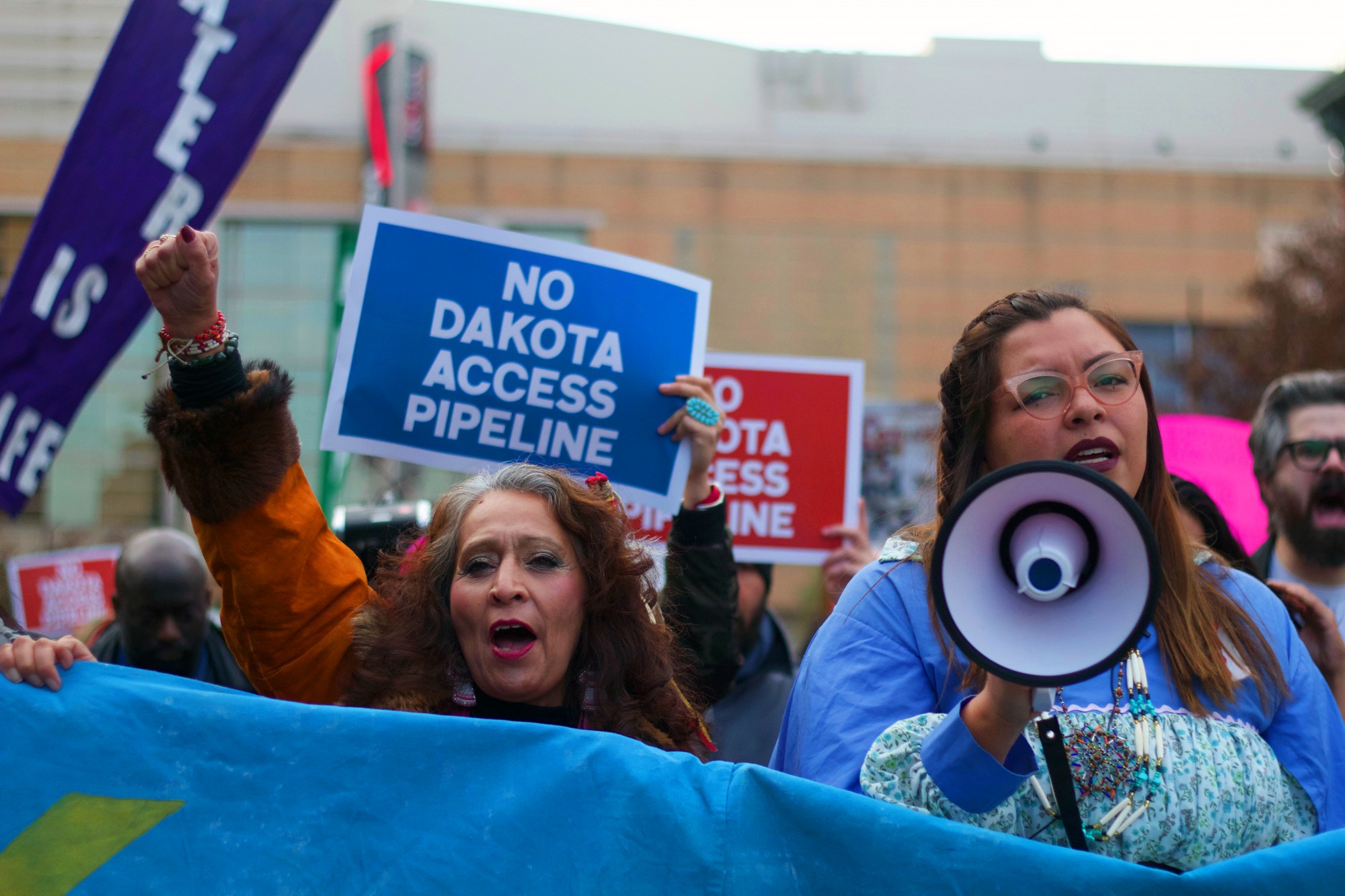As hundreds of protesters, including more than 20 University of Maryland students, marched Tuesday evening from the Army Corps of Engineers Headquarters to the White House to protest the Dakota Access pipeline, bystanders joined in. Vermont Sen. Bernie Sanders even made a short speech.
But once the group neared the White House, some were told to step back.
“‘Thank you for being allies … but we need the youth and we need the native people to lead this, because this is their battle,'” they were told, senior environmental science and policy major Julia Keane said.
To Keane, it was the most powerful moment of Tuesday’s rally.
The Dakota Access Pipeline is a proposed line of oil transmission in North Dakota that environmental activists and the Standing Rock Sioux Tribe oppose. Tuesday was a national day of solidarity in which about 300 protests against the pipeline took place across the country, said Maya Spaur, a senior environmental science and technology and government and politics major.
“It’s really important for D.C. specifically to be kind of the hub of this movement, just because there are so many influential policymakers and activists and organizations that are centered here,” Spaur said.
Beginning at the Army Corps of Engineers Headquarters, a few speakers addressed the crowd, including actress Shailene Woodley, civil rights leader Ben Jealous, labor union leader Larry Cohen and Eryn Wise from the International Indigenous Youth Council.
The activists spoke about how the pipeline is “violating these people’s rights to clean water and … to community, because it’s their burial grounds -— disrupting their sacred space,” Spaur said, referring to the Sioux land where the pipeline would be constructed.
An Army Corps official also came out to entertain protesters’ questions and concerns. The official assured the protesters that their concerns about the pipeline would be taken into consideration, but protesters responded by saying, “Shut it down!” Spaur said she thought this was “not totally necessary.”
The protesters stopped a few times along the march, including in front of the Trump International Hotel and some banks, said sophomore math major Phil Reiter.
“Everyone would stop … you could see workers from restaurants coming out and recording,” Reiter said. “You could see people looking from the buildings at the windows. We got a lot of people who were smiling, cheering us on, honk[ing] from cars.”
Once the group arrived at the White House, Sanders, as well as some tribal activists, spoke.
Having Sanders and Woodley at the rally “definitely made people excited and [feel] like we’re going to have to keep organizing,” Spaur said. “What we’re doing now, we’re going to have to double it once [Donald] Trump is actually in office.”
While protesting the pipeline itself is a start, there are other important players involved such as banks, construction companies and the corporations funding it, she added.
“This is an amazing first step, but it’s a first step,” Reiter said.



